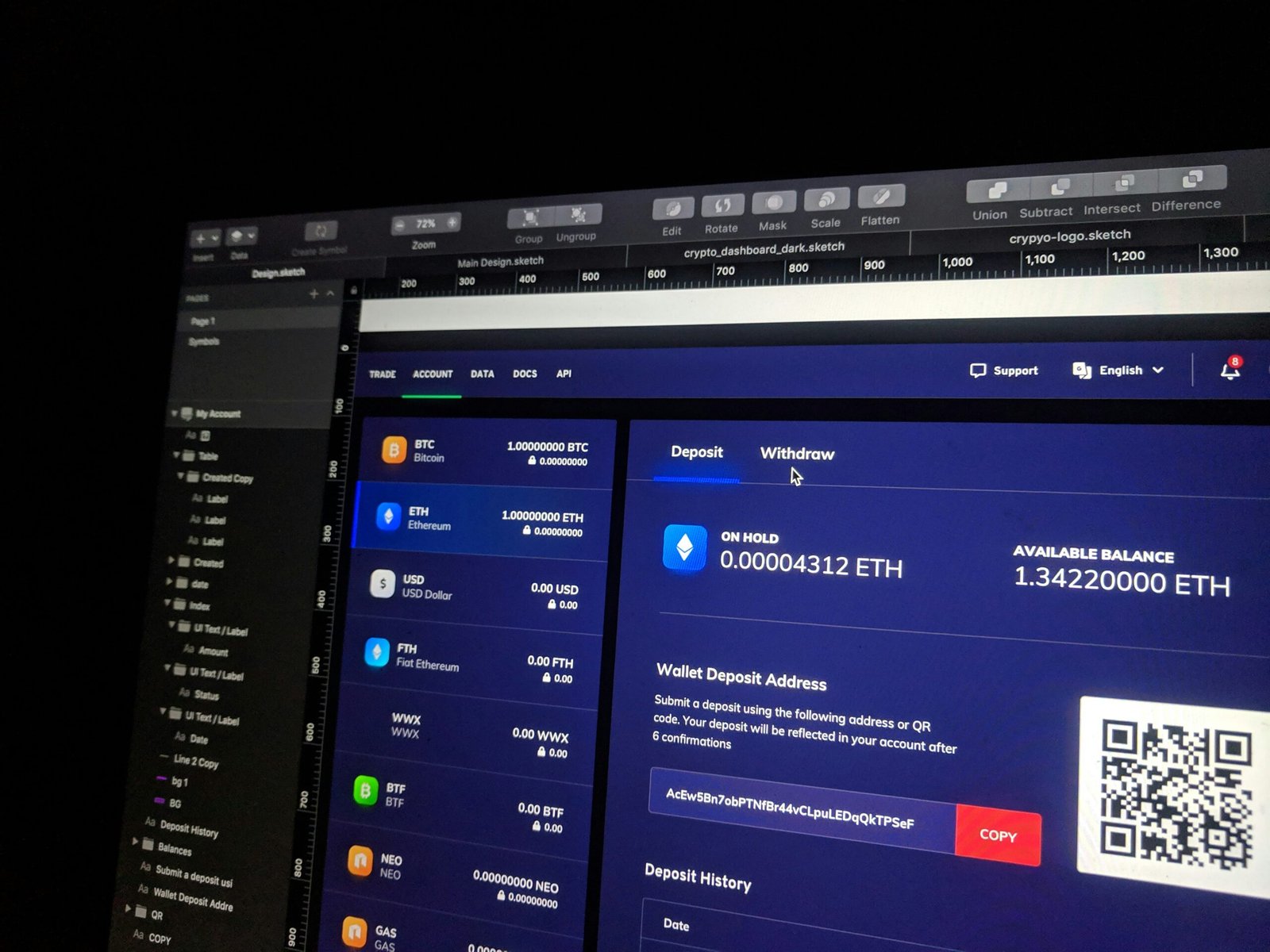Understanding Top Cyber Attacks: A Deep Dive into Phishing Scams and Prevention Strategies
Introduction to Cyber Attacks
In today’s interconnected world, cyber attacks have become an increasingly prevalent and sophisticated threat to individuals, businesses, and governments alike. These malicious activities are designed to disrupt, damage, or gain unauthorized access to computer systems, networks, or data. As technology advances, so too do the methods employed by cybercriminals, making it imperative for everyone to understand the nature of these threats and how to defend against them.
Cyber attacks can take many forms, ranging from relatively straightforward tactics to highly complex and coordinated operations. Common types of cyber attacks include malware, ransomware, denial-of-service (DoS) attacks, and, notably, phishing scams. Each of these attacks exploits vulnerabilities in digital systems or human psychology to achieve its malicious aims. The financial, reputational, and operational impacts of such attacks can be devastating, underscoring the need for robust cybersecurity measures.
The digital age has seen an exponential growth in the volume and sophistication of cyber attacks. The rise of the internet, cloud computing, and the Internet of Things (IoT) has expanded the attack surface, providing cybercriminals with more opportunities to infiltrate systems. Furthermore, the increasing reliance on digital platforms for communication, commerce, and information storage has made cyber attacks not only more frequent but also more damaging.
Among the various forms of cyber attacks, phishing scams stand out due to their effectiveness and versatility. Phishing involves tricking individuals into divulging sensitive information, such as passwords or credit card numbers, by masquerading as a trustworthy entity. This type of social engineering attack preys on human vulnerabilities, making it a significant and persistent threat in the cybersecurity landscape.
This blog post aims to delve into the specifics of phishing scams, exploring how they operate, their impact, and the strategies that can be employed to prevent them. By understanding the mechanisms behind these attacks and adopting proactive measures, individuals and organizations can better protect themselves in an increasingly digital world.

Overview of Common Cyber Attacks
In the rapidly evolving digital landscape, cyber attacks have become a significant threat to individuals and organizations alike. Understanding the various forms of these attacks is crucial for effective defense mechanisms. Among the myriad of cyber threats, some of the most prevalent include malware, ransomware, man-in-the-middle attacks, and Distributed Denial of Service (DDoS) attacks.
Malware, short for malicious software, encompasses a variety of harmful programs such as viruses, worms, and Trojan horses. These programs are designed to infiltrate and damage computer systems, often leading to data theft, system malfunction, or unauthorized access to sensitive information. The impact of malware can be devastating, with consequences ranging from financial loss to the compromise of personal and corporate data.
Ransomware is a specific type of malware that encrypts the victim’s data, rendering it inaccessible until a ransom is paid to the attacker. This form of cyber attack has seen a significant rise in recent years, targeting not only individuals but also large organizations, including hospitals, schools, and government agencies. The financial and operational disruptions caused by ransomware attacks can be profound.
Man-in-the-middle (MitM) attacks occur when a malicious actor intercepts and potentially alters communication between two parties without their knowledge. This type of attack can lead to the exposure of sensitive information, such as login credentials and financial details. MitM attacks often exploit vulnerabilities in unsecured networks, making the use of encrypted communication channels essential for protection.
Distributed Denial of Service (DDoS) attacks aim to disrupt the normal traffic of a targeted server, service, or network by overwhelming it with a flood of internet traffic. This can render websites and online services unavailable to users, causing significant operational and reputational damage. DDoS attacks are frequently used as a diversion tactic, allowing attackers to carry out more covert activities while the targeted organization focuses on mitigating the attack.
By understanding these common cyber attacks, individuals and organizations can better prepare and implement robust security measures to safeguard against potential threats. As we delve deeper into phishing scams, it is essential to recognize that they are just one facet of the broader cyber threat landscape.
What is Phishing?
Phishing is a type of cyber attack that involves deceiving individuals into divulging sensitive information such as usernames, passwords, and financial details. Cybercriminals employ various tactics to create a sense of urgency or legitimacy, often mimicking trusted entities like banks, government institutions, or well-known companies. The primary goal is to trick individuals into providing personal information or clicking on malicious links that can lead to further exploitation.
One of the most common forms of phishing involves deceptive emails. These emails often appear to come from legitimate sources and may include logos, official language, and other elements that make them seem authentic. They typically contain a call to action, such as a request to update account information, verify identity, or claim a prize. The email usually includes a link directing the recipient to a fake website designed to capture their information.
Fake websites are another hallmark of phishing attacks. These sites are crafted to look identical to legitimate ones, often using similar URLs and design elements. Once a victim enters their details on these spoofed sites, the information is captured and used by the attackers for unauthorized access or fraudulent activities.
Social engineering tactics are also widely used in phishing schemes. Attackers may gather information about their targets from social media profiles or other public sources to craft personalized messages that increase the likelihood of success. By leveraging psychological manipulation, such as exploiting emotions like fear or excitement, phishers can effectively convince individuals to act against their better judgment.
Understanding the characteristics of phishing attacks is crucial for recognizing and avoiding them. Awareness and education are key components in the fight against phishing, as they empower individuals to identify suspicious activities and take appropriate measures to protect their sensitive information. Employing best practices, such as scrutinizing email sources, verifying website URLs, and being cautious with unsolicited communications, can significantly reduce the risk of falling victim to phishing scams.
Real-Life Examples of Phishing Scams
Phishing scams have become increasingly sophisticated, targeting both individuals and organizations with alarming precision. One of the most prominent examples in recent years is the 2016 Democratic National Committee (DNC) email leak. Hackers, believed to be linked to Russian intelligence, used spear-phishing emails to gain access to the email accounts of DNC staff. The attackers sent emails that appeared to be from legitimate sources, tricking recipients into divulging their login credentials. The breach resulted in the public release of thousands of sensitive emails, significantly impacting the 2016 U.S. presidential election and highlighting the severe consequences of phishing scams.
Another notable incident is the Google Docs phishing scam that occurred in May 2017. In this attack, users received an email that appeared to be from someone they knew, inviting them to view a document on Google Docs. The email contained a link that redirected users to a fake Google login page, where they were prompted to enter their credentials. Once the attackers obtained these credentials, they gained access to the victims’ email accounts and contacts, further propagating the scam. This incident underscored the importance of verifying the authenticity of email links and the need for robust security measures to prevent unauthorized access.
In 2019, a sophisticated phishing campaign targeted Office 365 users, exploiting the trust placed in Microsoft’s widely-used platform. Attackers sent out emails that mimicked legitimate Microsoft notifications, urging recipients to update their account information or resolve security issues. The emails contained links to convincingly realistic phishing websites designed to harvest login credentials. This campaign affected numerous organizations, leading to compromised accounts and unauthorized data access, demonstrating the persistent threat posed by phishing attacks.
These examples illustrate the various methods employed by cybercriminals to execute phishing scams and the substantial impact these attacks can have on both individuals and organizations. The increasing frequency and sophistication of phishing incidents underscore the necessity for heightened awareness and proactive measures to safeguard sensitive information.

Identifying Phishing Attempts
Recognizing phishing attempts is crucial to safeguarding personal and organizational information. Phishing scams often exhibit certain telltale signs that alert discerning users. One of the primary indicators of a phishing attempt is poor grammar and spelling errors. Professional organizations typically maintain high standards of communication, so emails riddled with mistakes can be a red flag.
Additionally, phishing emails frequently employ urgent language designed to elicit a quick response. Phrases such as “immediate action required” or “your account will be suspended” are common tactics used to create a sense of panic, prompting the recipient to act without due diligence. Legitimate entities generally do not resort to such alarmist messaging.
Suspicious links are another hallmark of phishing attempts. Phishers may disguise malicious links to appear as if they are from reputable sources. It is essential to hover over any link to verify its true destination before clicking. A mismatch between the displayed link and the actual URL is a strong indicator of a phishing scam.
Requests for personal information, such as passwords, social security numbers, or financial details, should also raise immediate concern. Reputable organizations will never ask for sensitive information via email. Always verify the authenticity of such requests independently, through official channels, rather than responding directly to the email.
To bolster understanding, consider examining visual aids showing examples of actual phishing emails. Screenshots can illuminate the red flags discussed, providing a concrete reference for readers. By familiarizing oneself with these common characteristics, individuals are better equipped to identify and thwart phishing attempts effectively.
Preventive Measures Against Phishing Scams
Phishing scams have become increasingly sophisticated, posing significant risks to both individuals and organizations. To mitigate these threats, a multipronged approach to cybersecurity is essential. One of the primary strategies is the utilization of anti-phishing software. These tools can detect and block malicious emails before they reach the user’s inbox, thereby reducing the risk of falling victim to a phishing attack. Popular anti-phishing software options include email filters and browser extensions, which provide an additional layer of security.
Regularly updating passwords is another crucial preventive measure. Passwords should be strong, unique, and changed at regular intervals to minimize the risk of unauthorized access. Utilizing a password manager can simplify this process by generating and storing complex passwords securely. This practice not only safeguards individual accounts but also protects organizational data from potential breaches.
Enabling two-factor authentication (2FA) adds an extra layer of security by requiring a second form of verification, such as a text message or authentication app, in addition to the password. This makes it significantly more challenging for cybercriminals to gain access, even if they manage to obtain the password through phishing. Implementing 2FA across all accounts, particularly those with sensitive information, is highly recommended.
Lastly, educating employees about cybersecurity best practices is a vital component of a comprehensive defense strategy. Regular training sessions can help employees recognize phishing attempts and respond appropriately. Topics should include identifying suspicious emails, avoiding clicking on unknown links, and reporting potential phishing incidents to the IT department. By fostering a culture of vigilance, organizations can significantly reduce the likelihood of successful phishing attacks.
Incorporating these preventive measures can greatly enhance the overall security posture against phishing scams. By leveraging technology and promoting awareness, both individuals and organizations can protect themselves from the ever-evolving landscape of cyber threats.
Steps to Take If You Fall Victim to a Phishing Scam
Falling victim to a phishing scam can be a distressing experience. Immediate actions are crucial to mitigate potential damage and secure your personal and financial information. The first step is to change your passwords immediately. Prioritize passwords for email accounts, banking, and any other sensitive accounts. Using complex passwords and enabling two-factor authentication can provide an additional layer of security.
Next, promptly contact your financial institutions. Inform them of the potential breach so they can monitor for suspicious activity and take necessary measures, such as freezing accounts or issuing new cards. It’s also advisable to review your recent transactions and report any unauthorized charges.
Reporting the incident to relevant authorities is another critical step. In the United States, you can report phishing scams to the Federal Trade Commission (FTC) at ftc.gov. Additionally, report the incident to the Anti-Phishing Working Group (APWG) at apwg.org. These organizations can track phishing activities and help prevent future scams.
Longer-term steps include closely monitoring your credit reports. Obtain reports from the three major credit bureaus—Equifax, Experian, and TransUnion—and examine them for any unusual or unauthorized activities. You may also consider placing a fraud alert or a credit freeze to protect against identity theft.
Implementing stronger security practices is essential to safeguard against future phishing scams. Regularly update your software and operating systems to patch vulnerabilities. Be vigilant about suspicious emails, links, and attachments. Educate yourself and others about recognizing phishing attempts and maintaining good cyber hygiene.
By taking these proactive steps, you can significantly reduce the risks associated with phishing scams and enhance your overall cybersecurity posture.
Conclusion: Staying Vigilant in the Digital Age
In the ever-evolving landscape of cyber threats, understanding the intricacies of phishing scams and implementing robust prevention strategies is paramount. As cyber criminals continuously develop more sophisticated methods to exploit vulnerabilities, it is crucial for individuals and organizations alike to remain vigilant and proactive.
The key points discussed throughout this blog post highlight the necessity of recognizing the signs of phishing attempts, such as suspicious emails, unexpected links, and requests for sensitive information. By fostering a culture of awareness and encouraging continuous education on the latest cyber threats, we can significantly mitigate the risk of falling victim to these malicious schemes.
Moreover, the implementation of advanced security measures, including multi-factor authentication, regular software updates, and comprehensive employee training programs, fortifies our defenses against potential attacks. Leveraging these tools and practices not only enhances our security posture but also instills a sense of confidence and preparedness in navigating the digital realm.
As the digital age progresses, staying informed about the latest cybersecurity trends and best practices remains a critical component of our defense strategy. Engaging with reliable sources of information, participating in cybersecurity training sessions, and fostering an open dialogue about security concerns within organizations are all essential steps in safeguarding our digital assets.
Ultimately, the responsibility of protecting ourselves and our organizations from cyber attacks lies in our hands. By remaining vigilant, proactive, and committed to continuous learning, we can effectively combat the ever-present threat of phishing scams and other cyber attacks. Together, we can create a safer digital environment, empowering ourselves to navigate the complexities of the cyber world with confidence and resilience.
For more articles related to technology, please browse around InnoVirtuoso and find more interesting reads.






